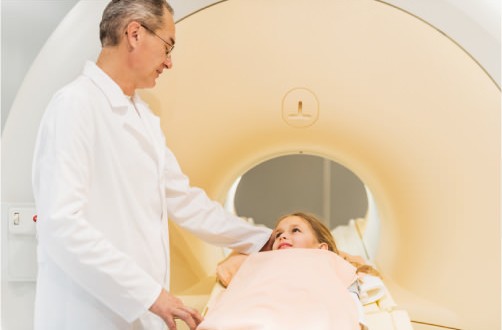As the value of medical imaging as a lifesaving tool has increased in recent years, so has patients’ radiation exposure from these procedures. The American Heart Association (AHA) released a statement about heart imaging in an effort to reduce unneeded radiation exposure.
“When medical imaging is being considered, patients should feel very comfortable asking how the test will help them and the possible risks, including radiation-related risks,” said Reza Fazel, M.D., M.Sc., chair of the writing committee for the statement and an AHA volunteer currently serving on the Joint Cardiac Imaging Committee of the AHA’s Council on Clinical Cardiology and Council on Cardiovascular Radiology.
As technology has improved, imaging tests have become an increasingly important tool in diagnosing and treating patients with heart disease. But the rising use has resulted in increased radiation exposure during the last two decades. Heart imaging now accounts for almost 40 percent of the radiation exposure patients receive from medical tests, according to the statement.
“In general, the radiation-related risk of any imaging test to an individual patient is very small and, when the test is clinically appropriate, the benefits of the test typically far outweigh any potential risks,” said Fazel, a cardiologist at Beth Israel Deaconess Medical Center in Boston, Massachusetts.
Some questions that may help a patient understand the risks and benefits are:
How will this test help diagnose or treat my heart problem?
Will the results of this test change the recommended treatment?
Are there other techniques to get the information without using radiation?
How much radiation exposure may occur?
How could that affect my chance of developing cancer later in life?
How does that risk compare to the risk from other common activities?
The most commonly used heart and blood vessel imaging procedures using radiation are nuclear stress tests, cardiac CT (computed tomography) scans and fluoroscopy (a real-time X-ray used to guide catheter and device placement during heart catheterization and tests for heart rhythm abnormalities). Echocardiography (ultrasound imaging of the heart) and cardiac magnetic resonance imaging do not expose patients to ionizing radiation.
The new statement also provides guidance for the training of professionals who order or administer cardiac imaging tests. Clinicians ordering imaging tests should understand when each type of test is appropriate, the typical average radiation dose and the potential risks. In deciding the best imaging method to use, the clinician should also consider the test’s diagnostic accuracy, potential risks, availability, cost and the patient’s convenience.
“Radiation-related risk is one of the factors that should be considered in the decision to use cardiovascular imaging with ionizing radiation, particularly in younger patients in whom the potential risk of radiation exposure is thought to be higher,” Fazel said.
Professionals who perform cardiac imaging should understand current methods required to select the optimal dose of radiation – using enough to produce high-quality imaged, not significantly more than that. They should also know how to minimize radiation exposure to staff, according to the statement.
Agencies/Canadajournal

 Canada Journal – News of the World Articles and videos to bring you the biggest Canadian news stories from across the country every day
Canada Journal – News of the World Articles and videos to bring you the biggest Canadian news stories from across the country every day

